Last week, we hosted our first in-person workshop, bringing together AFCP participants and archaeologists from multiple institutions to study the delicate work of excavating and analyzing archaeological textiles. Next week, we'll publish a post about the workshop, but first, we wanted to share the behind-the-scenes preparation that went into the event.


Project Fellows O. Angaragsuren and Kristen Pearson each designed hands-on activities to give participants a chance to practice the new skills they were learning. Angaragsuren prepared delicate, pleated textile pieces for participants to 'excavate' from containers filled with different types of dirt. For Angarag, it was important to mimic the experience of excavating very fragile textiles, which can blend in with the soil and crumble or tear easily when excavators attempt to remove them. To simulate the delicacy of archaeology textiles, he used weathered material that had been used to cover a ger. Because the material--a cotton blend--had been exposed to the elements for several years, it exhibited signs of wear and tear similar to some archaeological textiles. He chose to sew pleats into the textile pieces to imitate the style of some Mongol Empire era deel, which were pleated at the waist. This helped demonstrate the fact that fragmentary pieces can sometimes be associated with specific parts of larger objects, aiding in reconstruction efforts and helping to identify highly degraded textile objects.
On some pieces, Angarag applied gold foil decorations. Gold wrapped threads and applied gold leaf are frequently found on textiles from the Mongol Empire, and they can be exceptionally delicate. Other pieces included a lining of even finer fabric, challenging participants to recognize relationships between multiple layers of complex textile objects during excavation and cleaning.
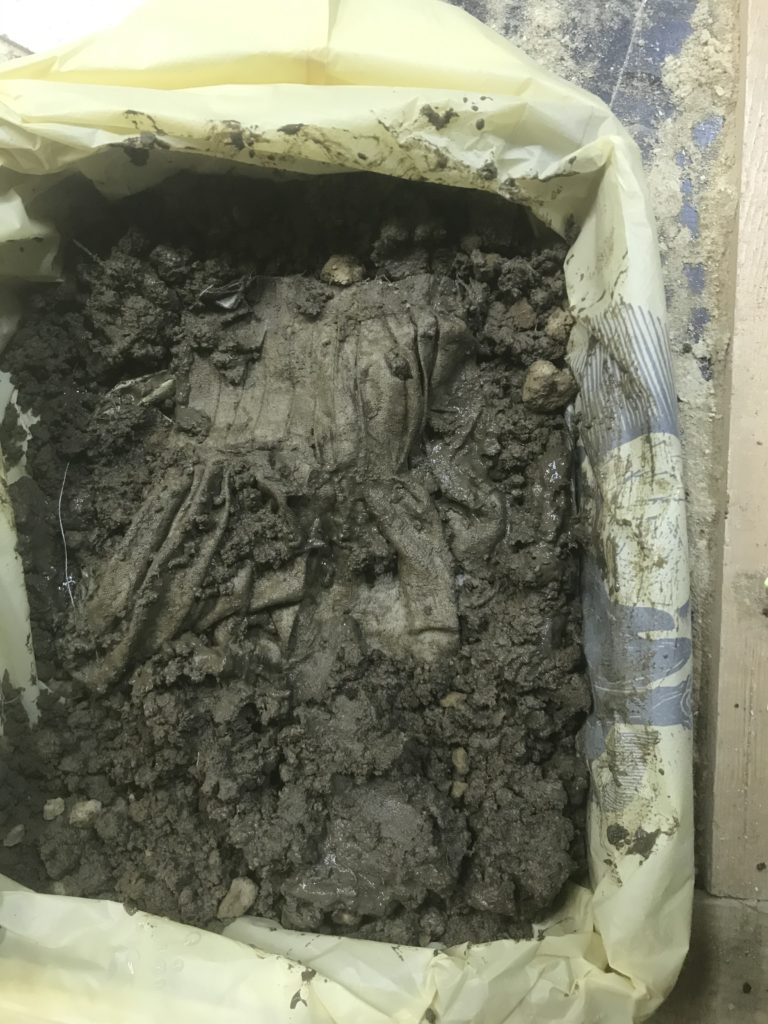
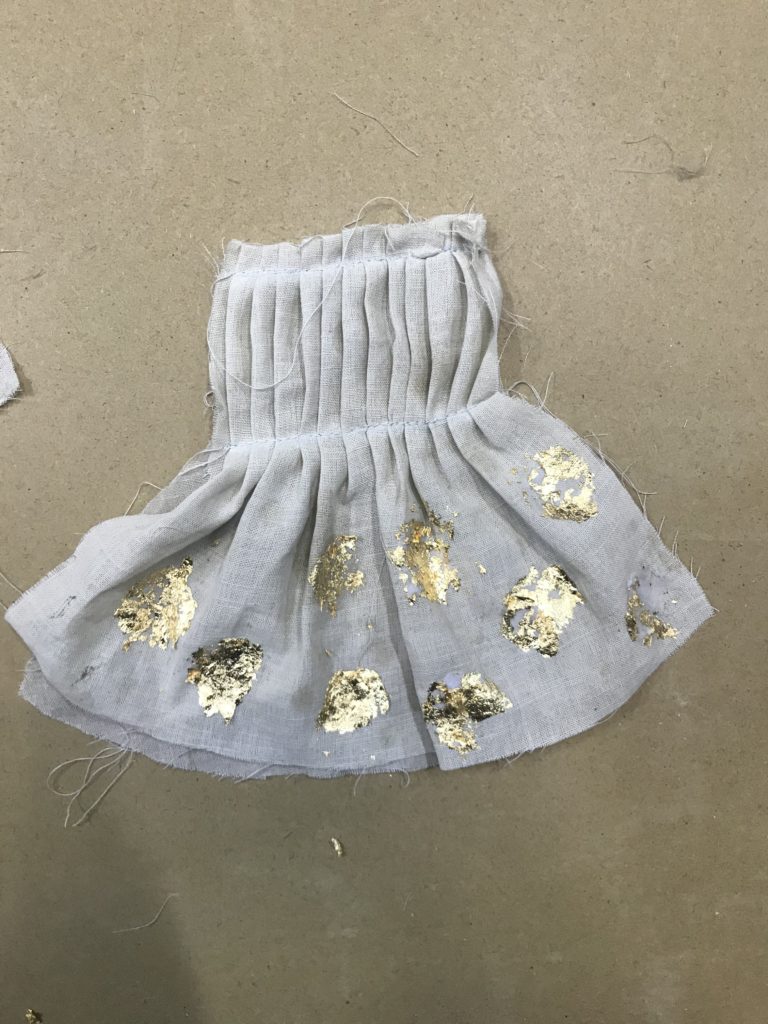
Kristen Pearson's hands-on activity focused on textile analysis, so she prepared samples of woven fabric demonstrating different weave types, stitches, and seams. Kristen wove many of the pieces herself, using one loom made by wrapping threads around two exposed pipes in her apartment and two others made with simple wooden frames. She prepared samples of plain weave, basket weave, half-basket weave, soumak, and slit, dovetail, and interlock tapestry using these simple looms, with string heddles attached to pencils and shed sticks made from rulers. This underscores the fact that a variety of textile techniques can be executed on the simplest of looms, using expedient tools that may be difficult to identify archaeologically.
After weaving her samplers, she cut them up into small pieces to simulate the experience of using small textile fragments to answer questions about weaving technology. For example, weaving errors can provide evidence about the type of loom used to make a fabric, while the presence of a selvage can help an analyst determine which threads are the warp and which are the weft--an important piece of technical data.
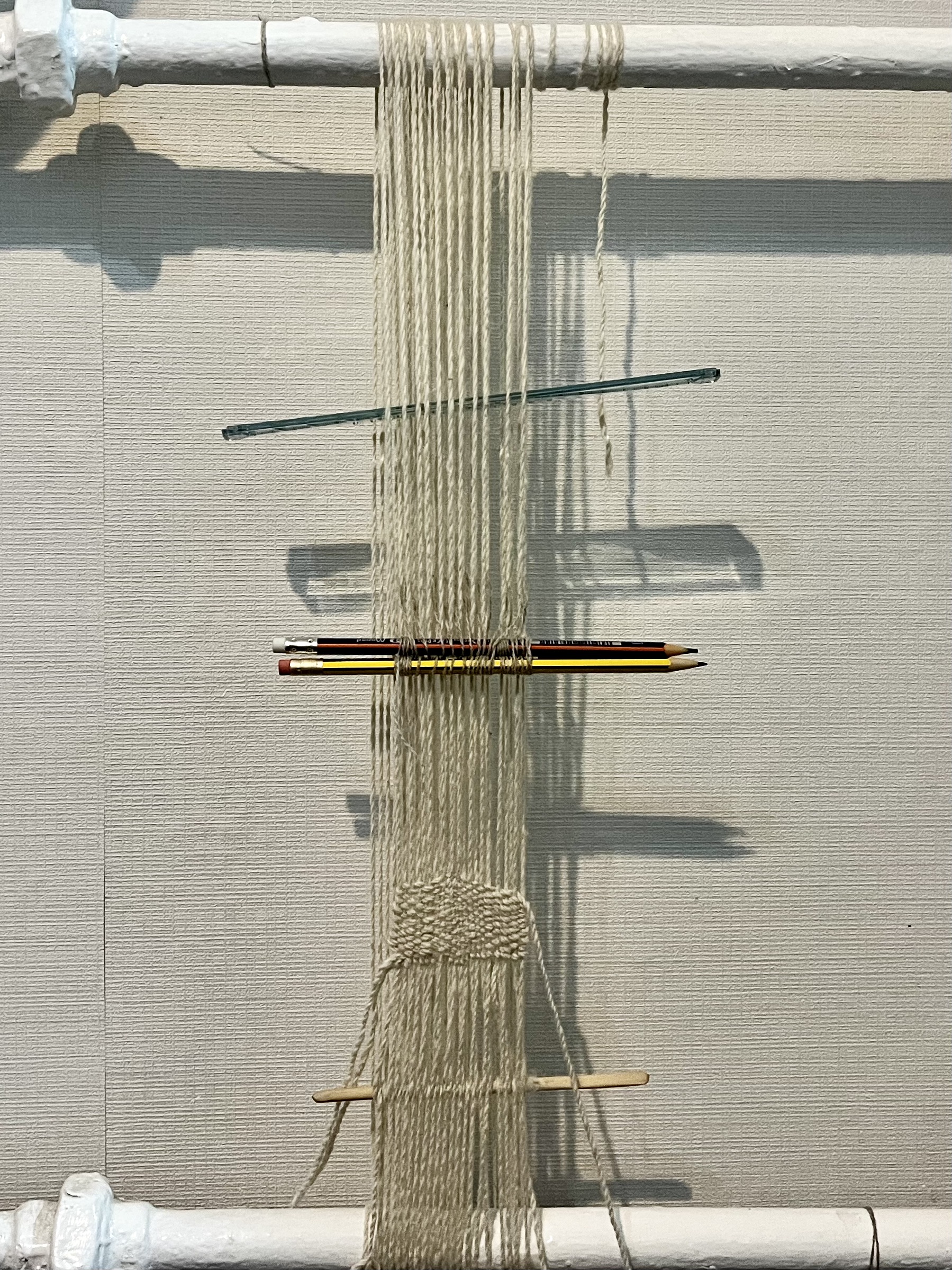
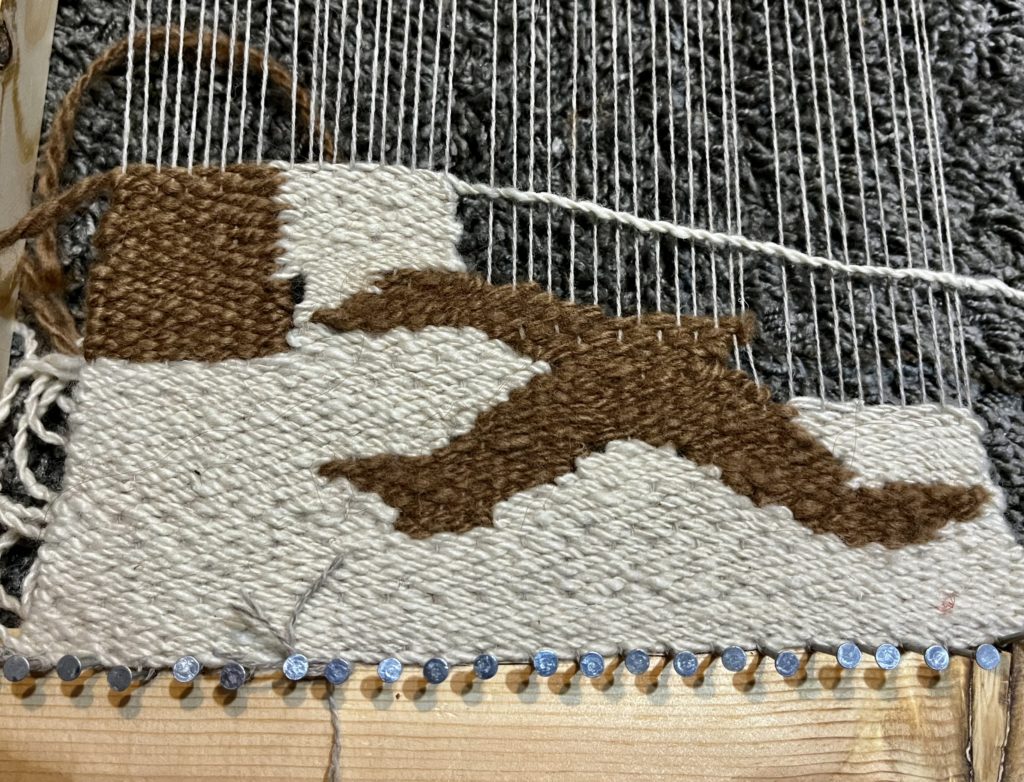
Kristen also prepared model spindle whorls--weights used in the process of spinning fibers into thread--from polymer clay. Because spindle whorls are frequently made from nonperishable materials like stone or ceramic, they tend to survive even when textiles do not. Spindle whorls can provide useful information on the range and types of threads produced in the past, and they can be analyzed using straightforward data such as the diameter of the whorl and its mass. Kristen made spindle whorls in a range of shapes and weights, and included three pierced objects unlikely to be spindle whorls in order to challenge participants to think carefully about criteria used to identify potential spindle whorls in the archaeological record.
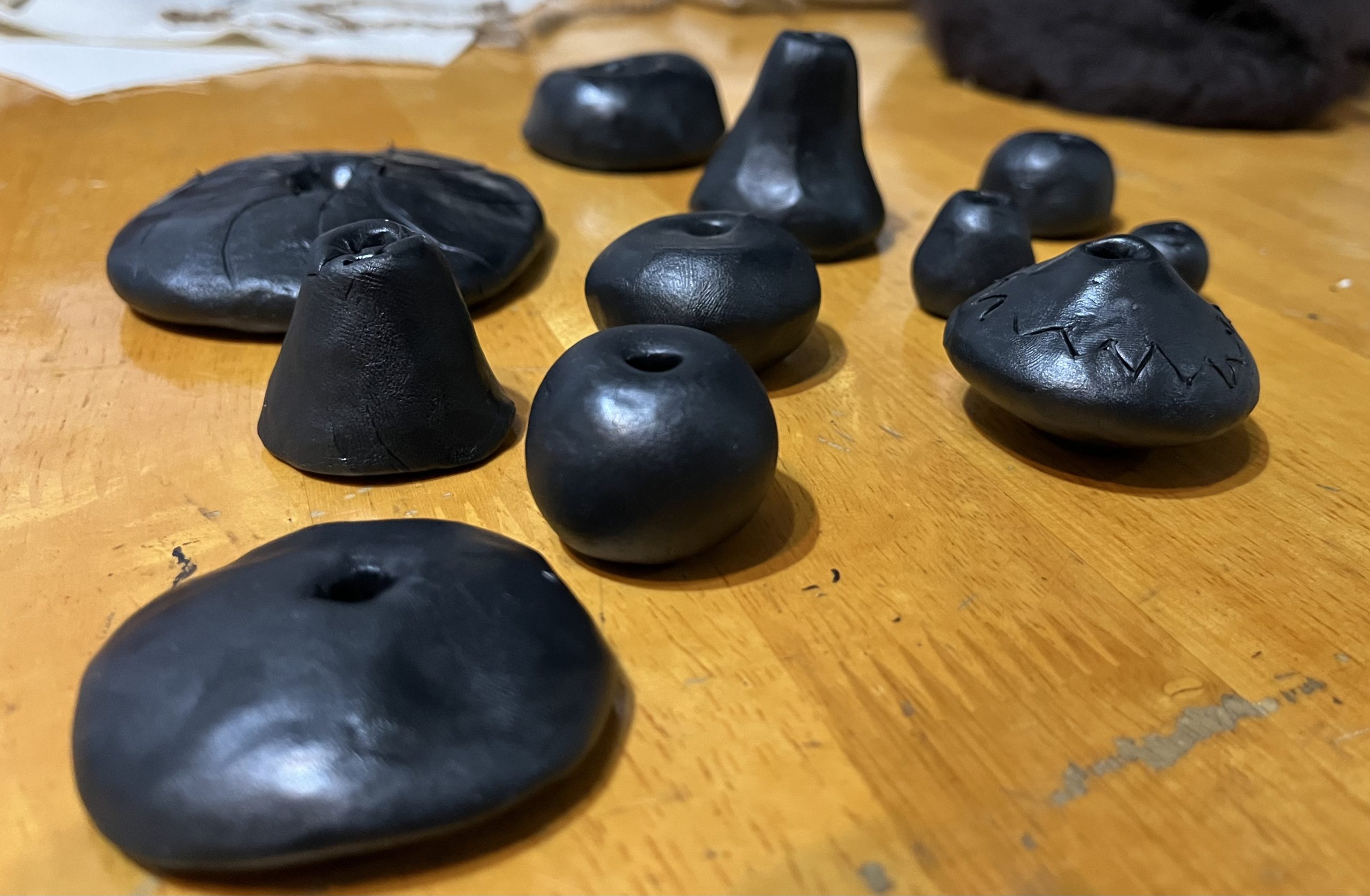
Keep an eye out for an upcoming post to see these teaching tools in action!
Angarag and Kristen would like to thank Ariana Pedigo and B. Munkhbat for their assistance preparing some of the materials for the workshop.